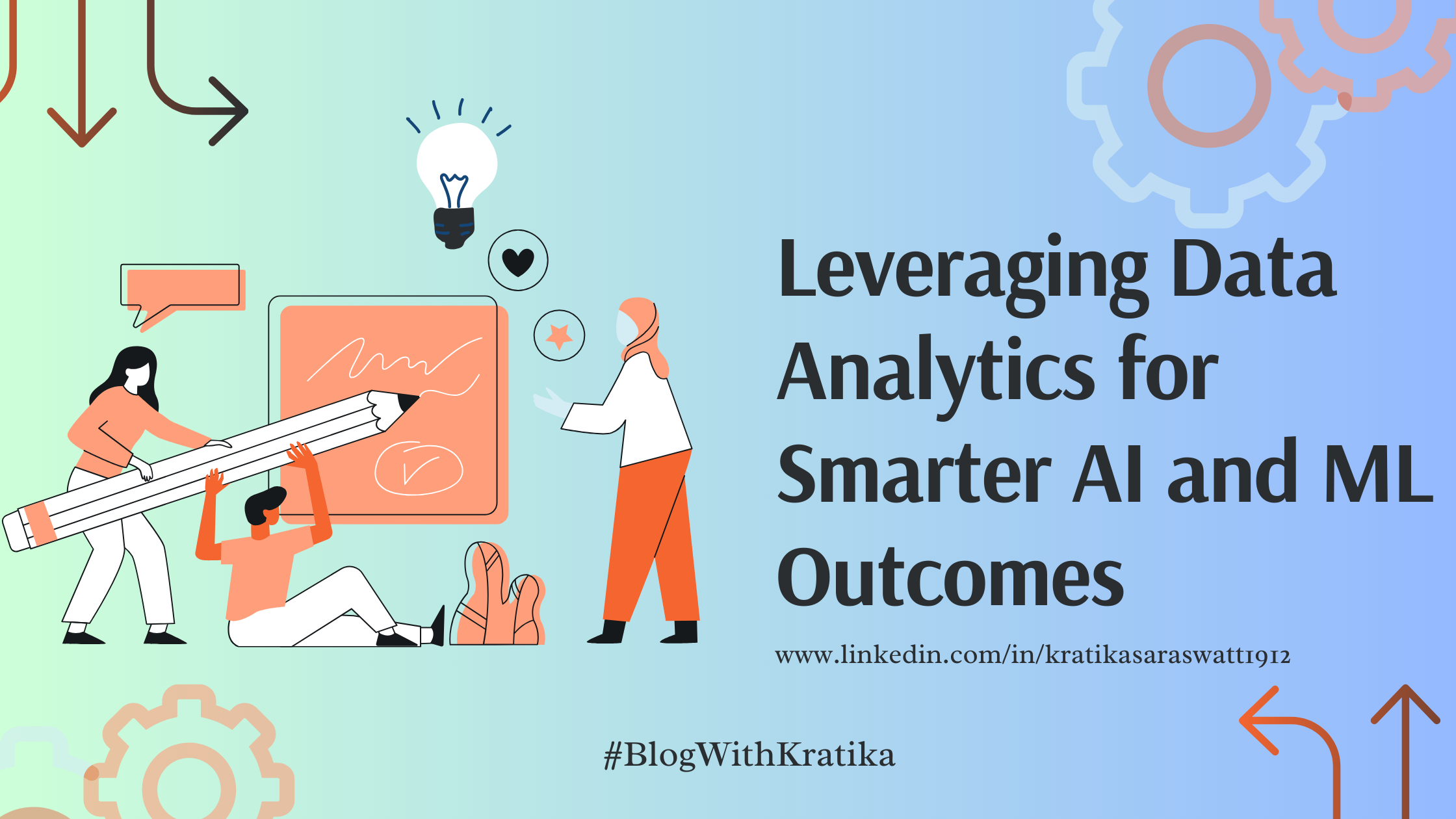Leveraging Data Analytics for Smarter AI and ML Outcomes
 Kratika Saraswat
Kratika Saraswat
In today’s digital age, Artificial Intelligence (AI) and Machine Learning (ML) have become buzzwords that promise to revolutionize various industries. From healthcare to finance, these technologies are redefining how organizations operate and make decisions. However, at the heart of AI and ML lies a crucial element: data analytics. Without data analytics, the potential of AI and ML remains untapped. This blog explores how leveraging data analytics can lead to smarter and more efficient AI and ML outcomes.
Understanding the Role of Data Analytics in AI and ML
Data analytics involves the process of examining, cleaning, transforming, and modeling data to discover useful information, draw conclusions, and support decision-making. In the context of AI and ML, data analytics is essential for several reasons:
Data Preparation: Before feeding data into an AI or ML model, it must be prepared and cleaned. This involves removing inconsistencies, handling missing values, and transforming data into a suitable format. Data analytics techniques help ensure that the data is accurate and ready for use, which is crucial for building reliable models.
Feature Engineering: Feature engineering is the process of selecting, modifying, or creating new features from raw data to improve the performance of AI and ML models. Data analytics tools can help identify which features are most relevant, leading to better model accuracy and predictive power.
Data Visualization: Visualizing data helps data scientists and analysts understand patterns, trends, and anomalies in the data. These insights can guide the development of AI and ML models, ensuring they capture the underlying patterns effectively.
Model Evaluation and Optimization: After building a model, it is important to evaluate its performance and make necessary adjustments. Data analytics provides various statistical and visualization tools to assess model accuracy, identify overfitting or underfitting, and optimize the model accordingly.
Key Data Analytics Techniques for Enhancing AI and ML
To achieve smarter AI and ML outcomes, organizations can leverage several data analytics techniques:
Exploratory Data Analysis (EDA): EDA involves summarizing the main characteristics of a dataset using visual methods like histograms, scatter plots, and box plots. EDA helps in identifying the structure, relationships, and potential anomalies in the data, which is critical for building robust AI and ML models.
Data Preprocessing: Techniques such as normalization, standardization, and data augmentation are used to prepare the data for modeling. Preprocessing helps in reducing noise, handling missing values, and ensuring that the data is in the right format, improving the model's performance.
Dimensionality Reduction: High-dimensional data can lead to increased computational costs and overfitting. Dimensionality reduction techniques like Principal Component Analysis (PCA) and t-Distributed Stochastic Neighbor Embedding (t-SNE) help in reducing the number of features while retaining the most important information, making the models more efficient.
Correlation Analysis: Understanding the correlation between different variables in a dataset is crucial for feature selection. Highly correlated features can introduce redundancy and reduce model performance. Data analytics helps in identifying and managing such correlations to build better models.
Outlier Detection: Outliers can significantly skew the results of AI and ML models. Data analytics provides techniques like Z-score analysis, Interquartile Range (IQR), and clustering-based methods to detect and handle outliers effectively.
Real-World Applications of Data Analytics in AI and ML
Let’s look at some real-world applications where data analytics has been pivotal in enhancing AI and ML outcomes:
Healthcare: In predictive healthcare, data analytics helps in processing vast amounts of patient data to identify patterns and predict diseases. For instance, data analytics is used to preprocess and analyze medical imaging data, which is then fed into AI models to detect anomalies such as tumors with high accuracy.
Finance: Financial institutions use data analytics to detect fraudulent transactions. By analyzing transaction patterns and using machine learning models, they can quickly identify and respond to suspicious activities. Data analytics ensures that the models are trained on clean, accurate data, improving their ability to detect fraud in real-time.
Retail: In the retail sector, data analytics is used to understand customer preferences and predict buying behaviors. By analyzing historical sales data, customer feedback, and market trends, AI models can recommend products, forecast demand, and optimize inventory management, leading to increased sales and customer satisfaction.
Marketing: Marketers use data analytics to segment customers based on their behavior, preferences, and demographics. Machine learning models can then target these segments with personalized campaigns, improving conversion rates and customer engagement.
Challenges in Leveraging Data Analytics for AI and ML
While data analytics offers numerous benefits, there are also challenges to consider:
Data Quality: Poor-quality data can lead to inaccurate models and misleading results. Ensuring data quality through continuous monitoring and validation is crucial.
Data Privacy and Security: As organizations collect and analyze more data, concerns around privacy and security increase. Implementing robust data governance frameworks is necessary to protect sensitive information.
Skill Gaps: Leveraging data analytics for AI and ML requires skilled professionals who understand both domains. Organizations need to invest in training and upskilling their workforce to bridge these gaps.
Conclusion
Data analytics is a fundamental component of AI and ML, playing a critical role in ensuring smarter, more accurate outcomes. From data preparation and feature engineering to model evaluation and optimization, data analytics helps unlock the full potential of AI and ML technologies. By leveraging data analytics effectively, organizations can not only improve their AI and ML models but also gain valuable insights that drive better business decisions.
Subscribe to my newsletter
Read articles from Kratika Saraswat directly inside your inbox. Subscribe to the newsletter, and don't miss out.
Written by
